Overview
The seven key benefits of 3D real estate for architects and developers include enhanced visualization for better design decisions, improved marketing strategies, cost-effective modifications, increased ROI, enhanced client communication, design flexibility, and faster project approvals. The article supports these benefits by detailing how 3D visualization streamlines the design process, engages clients through immersive experiences, and leverages advanced technologies like AI and VR to improve decision-making and project efficiency, ultimately leading to more successful outcomes in the real estate sector.
Introduction
In the realm of architecture and design, the advent of 3D rendering has revolutionized the way projects are conceived, communicated, and executed. This cutting-edge technology provides architects and developers with the ability to transform abstract concepts into vivid, lifelike visualizations, fostering a deeper understanding of design elements and spatial relationships. By enabling early detection of potential flaws and facilitating informed decision-making, 3D rendering not only streamlines the design process but also enhances collaboration among stakeholders.
As the industry increasingly embraces these advanced visualization techniques, the integration of artificial intelligence and virtual reality promises to further elevate the architectural landscape, paving the way for innovative solutions that resonate with clients and investors alike.
This article delves into the multifaceted benefits of 3D rendering, exploring its impact on:
- Design flexibility
- Marketing strategies
- Project approvals
- The future of architectural visualization
Enhanced Visualization for Better Design Decisions
3D visualization in 3D real estate serves as a crucial instrument in converting architectural concepts into highly realistic depictions, allowing architects and developers to experience their creations in a lifelike context. This advanced visualization technique not only enhances the creation process but also significantly aids in early identification of potential flaws, allowing for necessary adjustments before construction commences. By investing in high-quality visuals, stakeholders can visualize the investment potential of a project, ensuring clarity and understanding of the architectural vision behind the blueprints.
Furthermore, the integration of AI tools streamlines the 3D rendering process, producing visual references and raw concepts quickly, which enhances communication among contractors, builders, and clients, thereby removing conceptual misunderstandings. Stakeholders gain a deeper understanding of spatial relationships, materials, and lighting effects, which is crucial since smart lighting systems can reduce energy consumption by up to 35% when incorporated into plans. This clarity leads to more informed design decisions that align seamlessly with the overarching vision and goals.
Moreover, firms utilizing Building Information Modeling (BIM) have reported an impressive average time saving of 20% on tasks, underscoring the efficiency and cost-effectiveness that 3D real estate brings to the architectural landscape. For instance, 3D visualization has been shown to increase product sales by 13% in marketing contexts, effectively showcasing functionalities in various simulated environments, which parallels its use in architecture. The narrative aspect of 3D real estate visualization empowers developers by selling not just homes but futures, enhancing their ability to communicate the vision of the project to potential buyers.
The benefits of preliminary conceptual renderings—such as quick visualization, cost-effectiveness, informed decision-making, and enhanced communication—further support the iterative design process, making them indispensable in modern architectural practices.
Improved Marketing and Sales Strategies
3D real estate visuals have emerged as essential marketing tools that significantly engage potential buyers and investors in the sector. By leveraging the power of pre-sales visualization, developers can instill confidence in their initiatives with impressive visuals that act as a bridge between concept and reality. Statistics indicate that incorporating 3D rendering into marketing efforts can dramatically enhance customer engagement, making it a crucial aspect of modern marketing strategies.
These high-quality visuals enable developers to craft compelling presentations that effectively showcase the unique features and advantages of their projects, enhancing customer satisfaction and marketing effectiveness. As Jubayer Ahmad succinctly captures this evolution in the industry, ‘Gone are the days of presenting customers with hand drawings and rough sketches, expecting them to visualize a finished product.’ The emotional resonance generated by these representations is paramount in helping clients envision themselves within the space, a vital element in their decision-making process.
A case study titled ‘Cost-Efficiency of 3D Real Estate Visualization’ illustrates how 3D real estate serves as a cost-effective alternative to creating physical models for marketing, eliminating the need for costly physical staging while allowing for easy changes and updates. For example, one project experienced a 30% rise in investor interest after incorporating 3D visuals in their marketing strategy. As market trends shift towards immersive visual content, investing in 3D real estate visualization not only enhances property presentations but also saves time and money, making it a necessity for effective property marketing.
Testimonials from pleased clients, such as one who stated, ‘The 3D images brought our vision to life and helped us secure funding faster than we anticipated,’ further affirm the transformative impact of these visualizations, underscoring the reliability and excellence that J. Scott Smith Visual Designs brings to the table.
Cost-Effective Modifications and Increased ROI
One of the most compelling advantages of 3D rendering is the capacity for cost-effective adjustments during the creation phase. High-quality visualizations serve as a window into the future of your endeavor, enabling architects and developers to visualize changes in real-time, evaluate adjustments without the need for costly physical prototypes, and streamline the design process. This level of flexibility not only enhances customer engagement but also significantly boosts the potential for increased ROI.
As initiatives become more responsive to market demands, the financial outcomes improve dramatically. Kayla Rossi emphasizes this advantage, stating,
These renderings provide a true-to-life representation of the final product, allowing clients to visualize the endeavor as if it were already constructed.
This clarity fosters a better understanding of the concept, ultimately leading to more informed decisions and optimized project outcomes.
Additionally, the influence of 3D visualization reaches beyond economic advantages; it revolutionizes education and training in architecture by offering hands-on learning experiences through VR simulations and detailed 3D models. However, the complexity of a building’s structure, including factors such as size and intricacy, can significantly affect rendering costs and time. Consequently, thoughtful selection of elements is crucial to capture the essence of the initiative while managing resources efficiently.
With the Compound Annual Growth Rate (CAGR) projected at 22.5% for the adoption of 3D real estate technologies from 2018 to 2025, the financial implications cannot be overstated. Moreover, studies have shown that projects utilizing 3D visualization report an ROI increase of up to 30%, underscoring the tangible benefits of these innovative design approaches. Highlighting accuracy and intricacy in external visuals not only improves the aesthetic allure but also serves an essential function in matching the final outcome with customer expectations, ultimately affecting the cost of these exterior 3D visuals.
Enhanced Client Communication and Engagement
3D renderings in 3D real estate play a pivotal role in enhancing communication with customers by transforming architectural concepts into tangible representations. This clarity enables customers to envision initiatives with enhanced precision, encouraging fruitful conversations about aesthetic choices and particular needs. By connecting the divide between intricate technical terminology and stakeholder comprehension, effective visual communication guarantees that all participants stay coordinated throughout the endeavor.
The immersive nature of 3D visuals not only engages users but also cultivates a collaborative atmosphere where their feedback can be seamlessly integrated, mirroring the iterative design phase essential for project visualization. As noted in discussions surrounding outsourcing 3D architectural visualization, leveraging professional 3D real estate modeling services can significantly enhance business efficiency and market differentiation. Outsourcing these services not only allows firms to focus on their core competencies but also enables access to specialized expertise that can elevate the quality of visual outputs.
Engaging clients with compelling visuals leads to increased satisfaction levels and enhances property value through visual appeal. Furthermore, companies with advanced analytics are three times as likely to execute decisions as intended, underscoring the importance of clear data visualization in decision-making processes. A case study on the impact of advanced analytics on business performance reveals that companies with these capabilities outperform competitors.
Incorporating user feedback into the refinement process is essential for optimizing 3D real estate visualization strategies, as demonstrated by FineVis’s commitment to delivering precise visual representations that enhance quick data understanding without unnecessary embellishments. To commence the creative phase effectively, we urge you to work with our team, ensuring your vision is precisely captured and depicted in the final visuals.
Design Flexibility and Innovation in Projects
3D visualization in 3D real estate is transforming the architectural environment, offering architects and developers unmatched adaptability to investigate creative solution options. This technology, enhanced by AI, facilitates rapid prototyping and detailed visualization, allowing stakeholders to experiment with a variety of materials, layouts, and aesthetics without the constraints of traditional design methods. The meticulous attention to detail—from how sunlight dances off windows to the subtle texture of bricks—ensures that every rendering feels real, lived-in, and ready to be built.
Such immersive experiences foster a deeper connection between projects and future homeowners, laying the groundwork for thriving communities. Moreover, AI-driven technology is being utilized to create high-quality architectural layouts and analyze information in 3D real estate models, enabling architects to effectively modify elements for more visually impressive property displays. This adaptability fosters creativity, enabling teams to swiftly respond to changing customer needs and dynamic market trends.
As OpenAsset points out, ‘The architecture industry is undergoing significant changes, propelled by technological innovations, growing diversity, and a focus on sustainability efforts.’ This trend is reflected in the projected growth of the global digital asset management market, anticipated to surge from $3.96 billion in 2023 to $16.18 billion by 2032, marking a compound annual growth rate of 17.0%. Ultimately, this ability to pivot and innovate leads to the creation of distinctive, forward-thinking concepts that command attention in the competitive real estate sector.
Our cooperative design process starts with preliminary discussions to comprehend objectives and requirements, followed by customized proposals that highlight cost-efficiency and educated choices. Regular feedback is integral, ensuring that the final product not only meets but exceeds client expectations, capturing their design vision with precision.
Faster Project Approvals and Decision Making
Utilizing 3D real estate renderings can dramatically accelerate approvals by providing clear and detailed visual representations that stakeholders and regulatory bodies find easy to interpret. Providing the right information early in the process—such as comprehensive construction sets, detailed sketches, and essential specifications—saves time and money, underscoring the importance of collaboration and feedback at every stage. When shown lifelike visuals, decision-makers can swiftly grasp the scope and intent, resulting in expedited approvals and minimized delays.
This capability is especially advantageous in a competitive landscape where time is critical. For instance, recent trends indicate that endeavors employing 3D real estate visualization techniques experience significantly shorter approval times, allowing developers to advance their initiatives more rapidly. Renderings function not only as tools for visualization but also as a bridge between concept and reality, enhancing confidence and igniting investment potential.
Significantly, a study by Fortune Business Insights emphasizes that the healthcare segment is expected to show a leading compound annual growth rate (CAGR) during the forecast period, highlighting the increasing importance of timely task execution. Furthermore, as per The Brainy Insights, surveys indicate that initiatives validated through expert interactions and comprehensive visualizations can further improve approval efficiency, ensuring that data presented is trustworthy and actionable. By streamlining the approval process, developers not only enhance their operational efficiency but also bolster their market positioning, making 3D real estate visualizations an invaluable asset in architectural and construction projects.
Future Trends: AI and VR Integration in 3D Rendering
The architectural landscape is on the verge of a major transformation, driven by the integration of artificial intelligence (AI) and virtual reality (VR) into 3D real estate visualization. AI has the potential to significantly streamline rendering processes by automating repetitive tasks, allowing architects to focus on creativity and innovation while optimizing layouts based on comprehensive data insights. For instance, recent statistics indicate that the adoption of AI in architectural planning is rapidly increasing, showcasing its effectiveness in enhancing productivity and quality.
The ability to create lifelike computer-generated (CG) humans is particularly revolutionary, as it bridges the uncanny valley, making architectural visualizations more relatable and impactful. Similarly, AR tools are helping workers in various sectors, including manufacturing, detect defects faster and with greater accuracy, highlighting the advancements in immersive technology that can also benefit architecture. Furthermore, VR technology offers immersive experiences, allowing users to ‘walk through’ their future spaces prior to construction.
This level of engagement not only enhances customer satisfaction but also fosters collaboration and informed decision-making throughout the design process. The joint creation process at J. Scott Smith Visual Designs demonstrates this trend, where initial communication leads to customized proposals and detailed 3D real estate models, ensuring that customer visions are accurately realized. Specific steps, such as:
- Material selection
- Lighting selection
- Detail modeling
- Refinement stages
are critical to achieving high-quality renderings that fulfill expectations.
Testimonials from pleased customers further illustrate the effectiveness of this process, showcasing how their projects were brought to life through meticulous attention to detail and responsive communication. Accenture showcases the practical applications of VR in professional settings, utilizing avatars in VR onboarding to facilitate team-building exercises and offer real-time feedback. Additionally, fitness applications like Supernatural FitXR illustrate how immersive technology is being applied in different sectors, combining exercise with entertainment and showing the broader impact of these technologies.
As architects and developers increasingly embrace these cutting-edge technologies, they position themselves to meet the evolving demands of the market, ultimately delivering exceptional results that connect with customers. The future of 3D real estate is bright, characterized by the seamless integration of AI and VR that enhances architectural visualization, elevates client engagement, and opens new avenues for creativity.
Conclusion
3D rendering technology has revolutionized the architectural industry, offering substantial benefits in design processes, marketing strategies, and project approvals. By providing lifelike visualizations, architects and developers can identify potential design flaws early, ensuring alignment with client expectations and enhancing communication among stakeholders. This clarity leads to significant time and cost savings throughout the project lifecycle.
As a powerful marketing tool, 3D rendering captivates potential buyers and investors, enabling developers to create emotional connections that drive sales and expedite funding. The ability to make cost-effective modifications during the design phase further enhances return on investment, allowing projects to respond effectively to market demands.
Looking ahead, the integration of artificial intelligence and virtual reality promises to elevate architectural visualization even further. These technologies will streamline rendering processes and provide immersive experiences that enhance client engagement, positioning architects and developers to deliver exceptional results in a competitive market.
In essence, 3D rendering is not just a tool but a vital catalyst for innovation in architecture. By harnessing its capabilities, stakeholders can navigate complex design challenges, foster collaboration, and create successful projects that reflect creativity and functionality. The journey toward a more dynamic architectural environment is just beginning, with vast potential on the horizon.
Frequently Asked Questions
What is the role of 3D visualization in real estate?
3D visualization serves as a crucial tool for converting architectural concepts into realistic depictions, allowing architects and developers to experience their designs in a lifelike context, identify potential flaws early, and make necessary adjustments before construction begins.
How does 3D visualization benefit stakeholders in real estate projects?
By investing in high-quality visuals, stakeholders can visualize the investment potential of a project, ensuring clarity and understanding of the architectural vision behind the blueprints, which aids in informed design decisions.
What impact does AI have on the 3D rendering process?
The integration of AI tools streamlines the 3D rendering process, producing visual references quickly, enhancing communication among contractors, builders, and clients, and reducing conceptual misunderstandings.
What are the efficiency gains reported by firms using Building Information Modeling (BIM)?
Firms utilizing BIM have reported an average time saving of 20% on tasks, highlighting the efficiency and cost-effectiveness that 3D real estate visualization brings to the architectural landscape.
How does 3D visualization influence marketing in real estate?
3D visualization has been shown to increase product sales by 13%, effectively showcasing functionalities in simulated environments and enhancing the ability of developers to communicate their vision to potential buyers.
What are the key benefits of preliminary conceptual renderings in architecture?
Key benefits include quick visualization, cost-effectiveness, informed decision-making, and enhanced communication, making them essential in modern architectural practices.
How does 3D visualization enhance customer engagement in real estate marketing?
High-quality visuals engage potential buyers and investors, instilling confidence in projects and allowing developers to present unique features compellingly, which is crucial for customer satisfaction.
What cost advantages does 3D visualization offer compared to traditional marketing methods?
3D visualization is a cost-effective alternative to creating physical models for marketing, eliminating the need for costly physical staging and allowing for easy updates, thus saving time and money.
Can you provide an example of the effectiveness of 3D visualization in marketing?
One case study noted a 30% rise in investor interest after incorporating 3D visuals in their marketing strategy, demonstrating the effectiveness of immersive visual content.
What feedback have clients provided regarding the impact of 3D visualization?
Clients have reported that 3D images brought their visions to life and helped secure funding faster than anticipated, affirming the transformative impact of these visualizations.

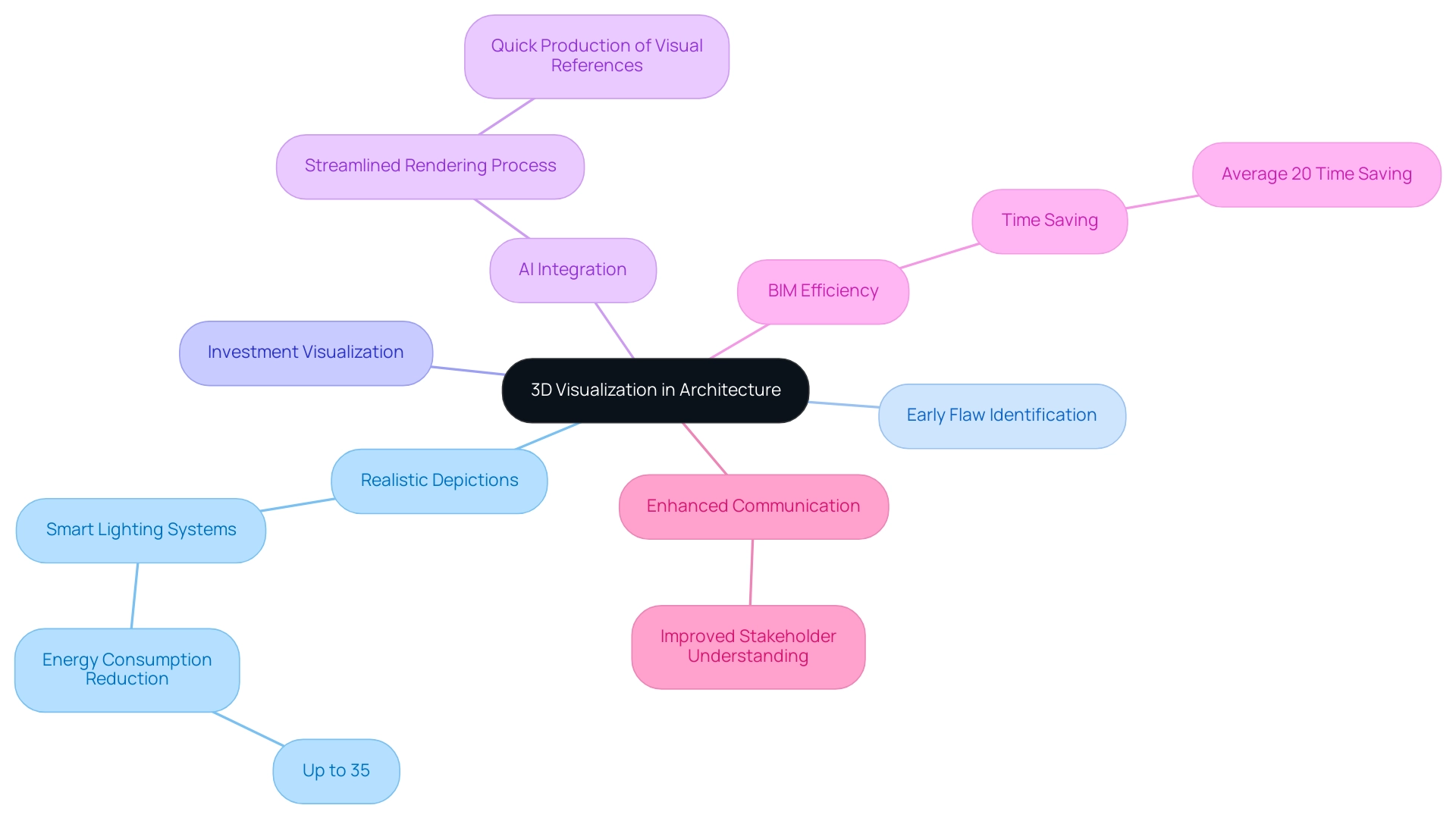
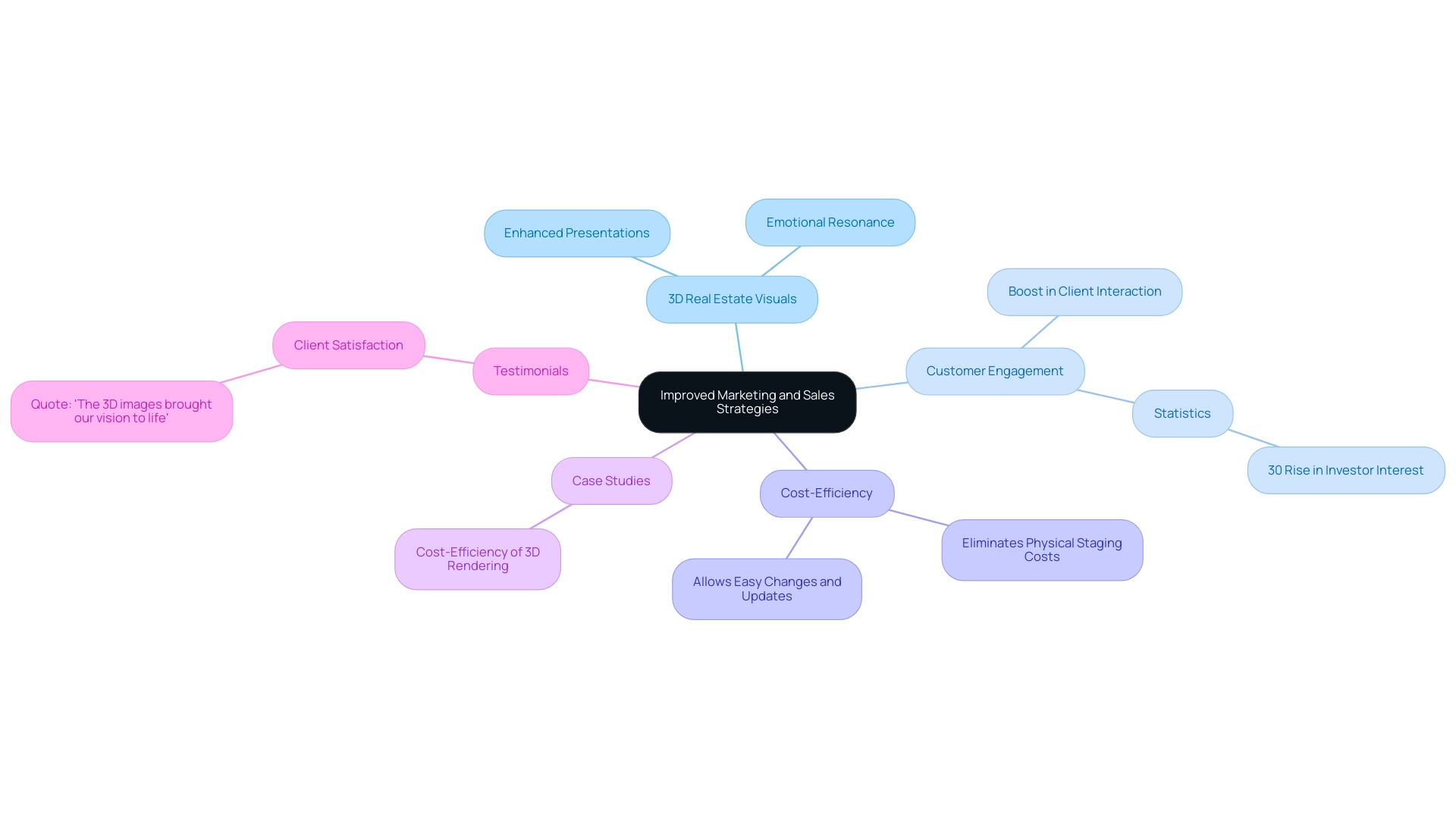
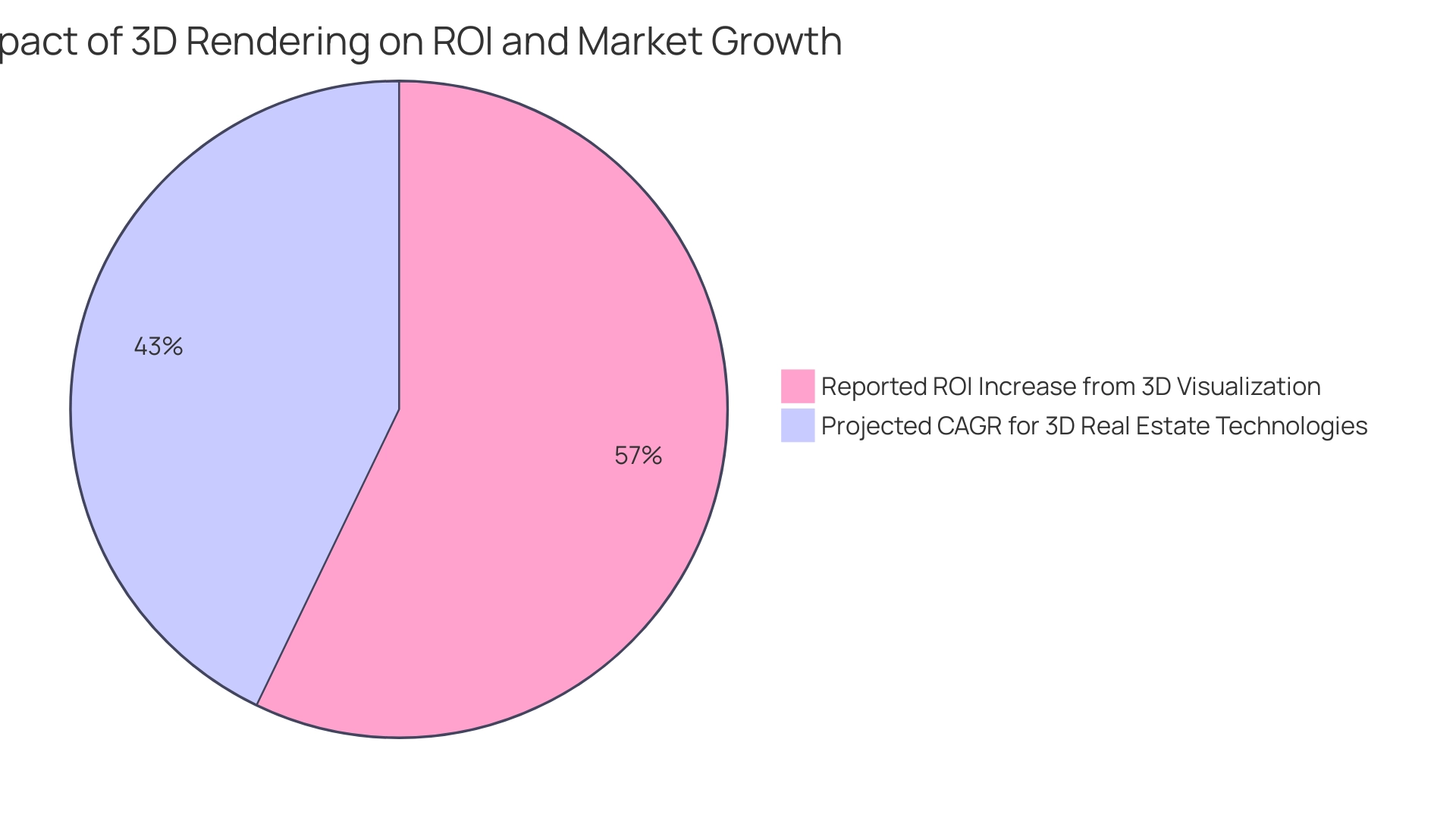
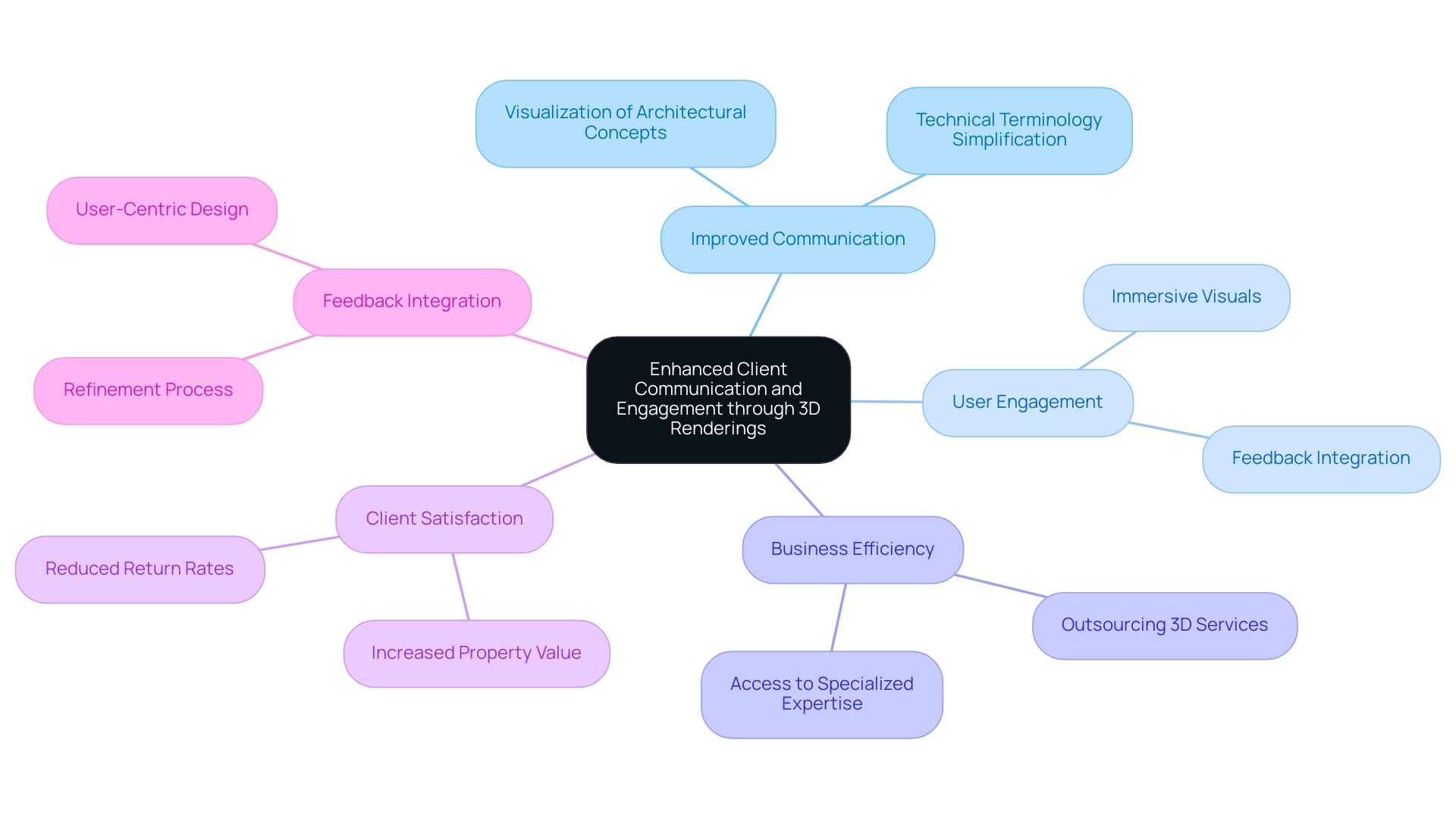
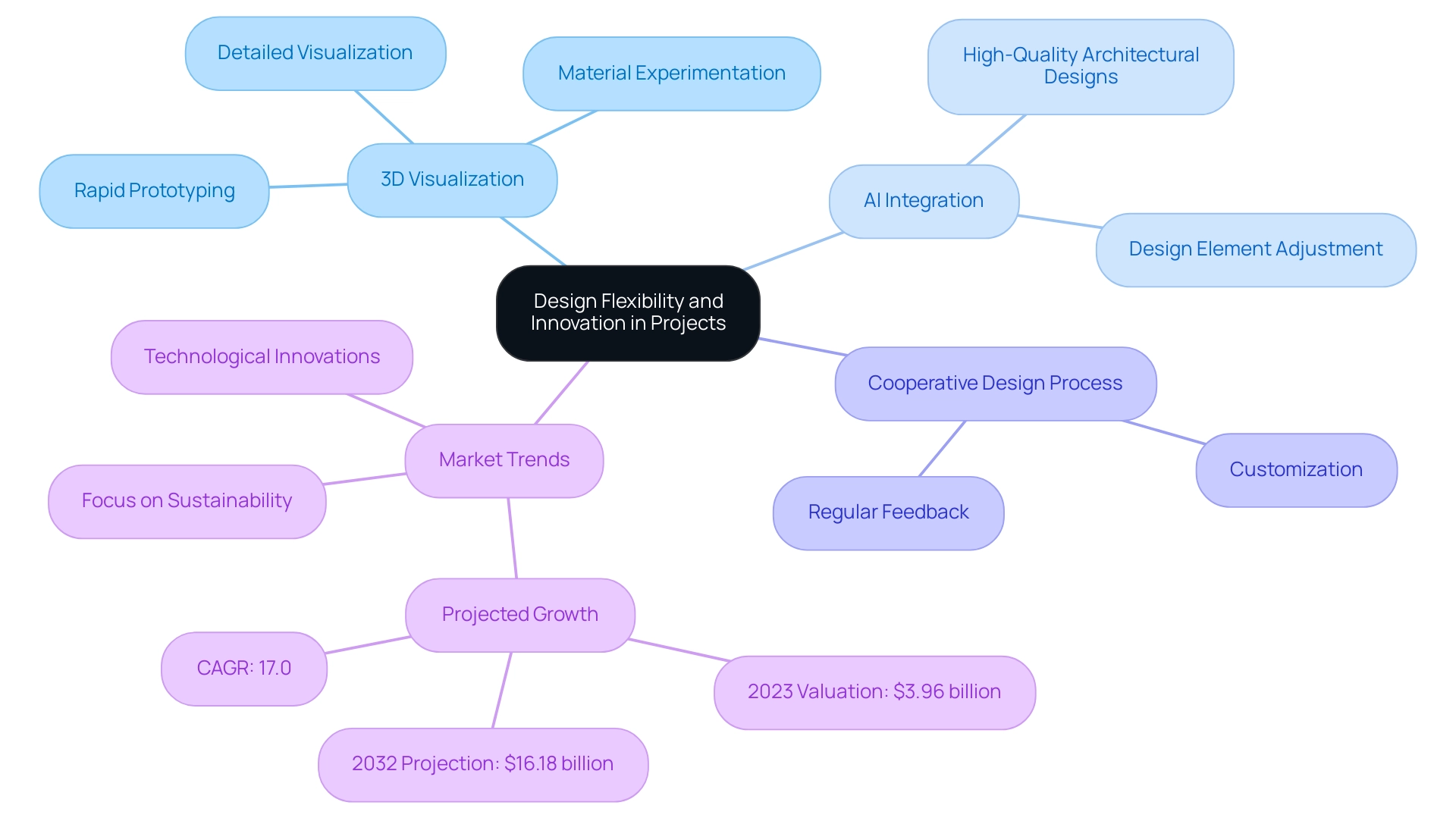
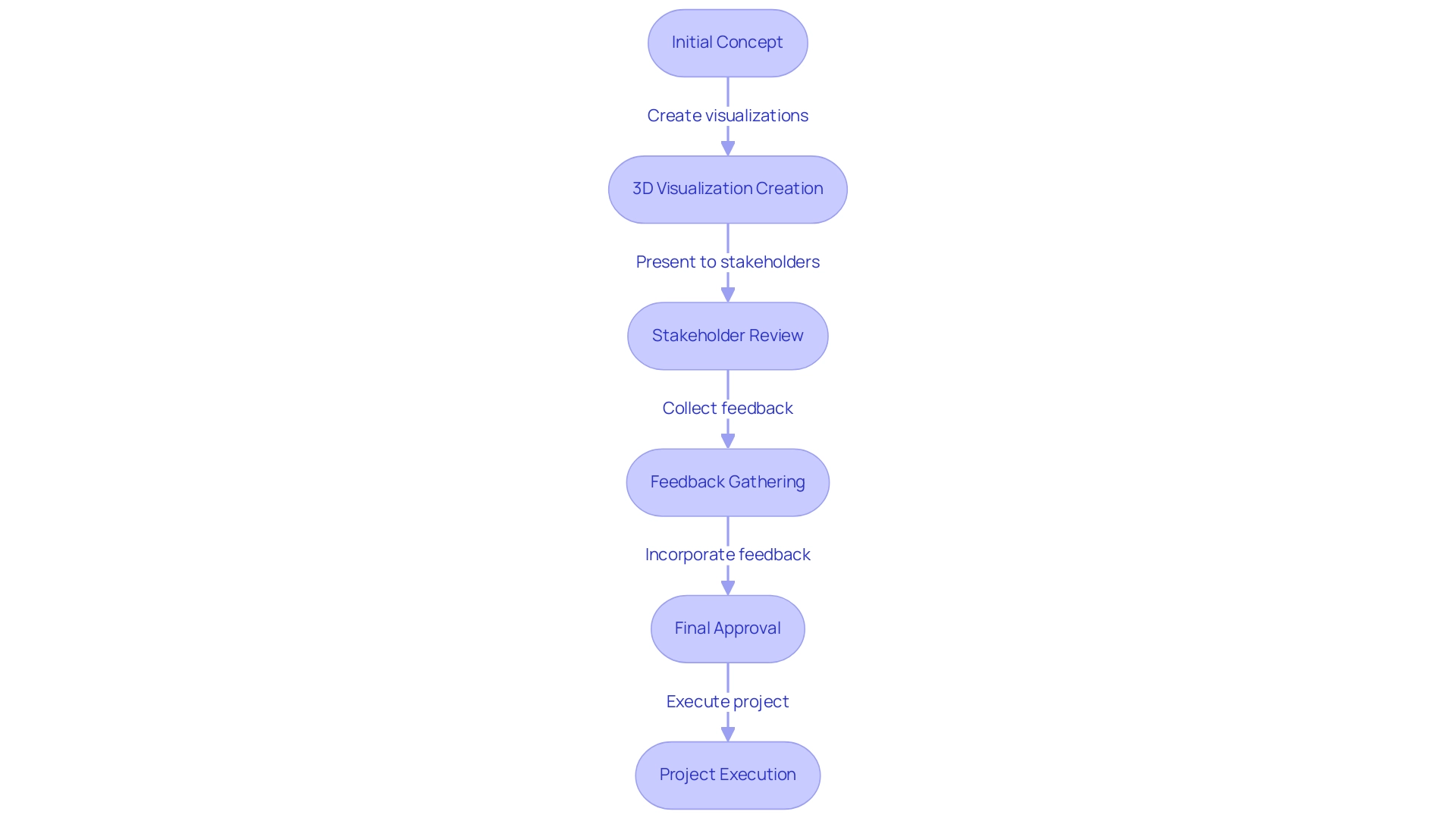
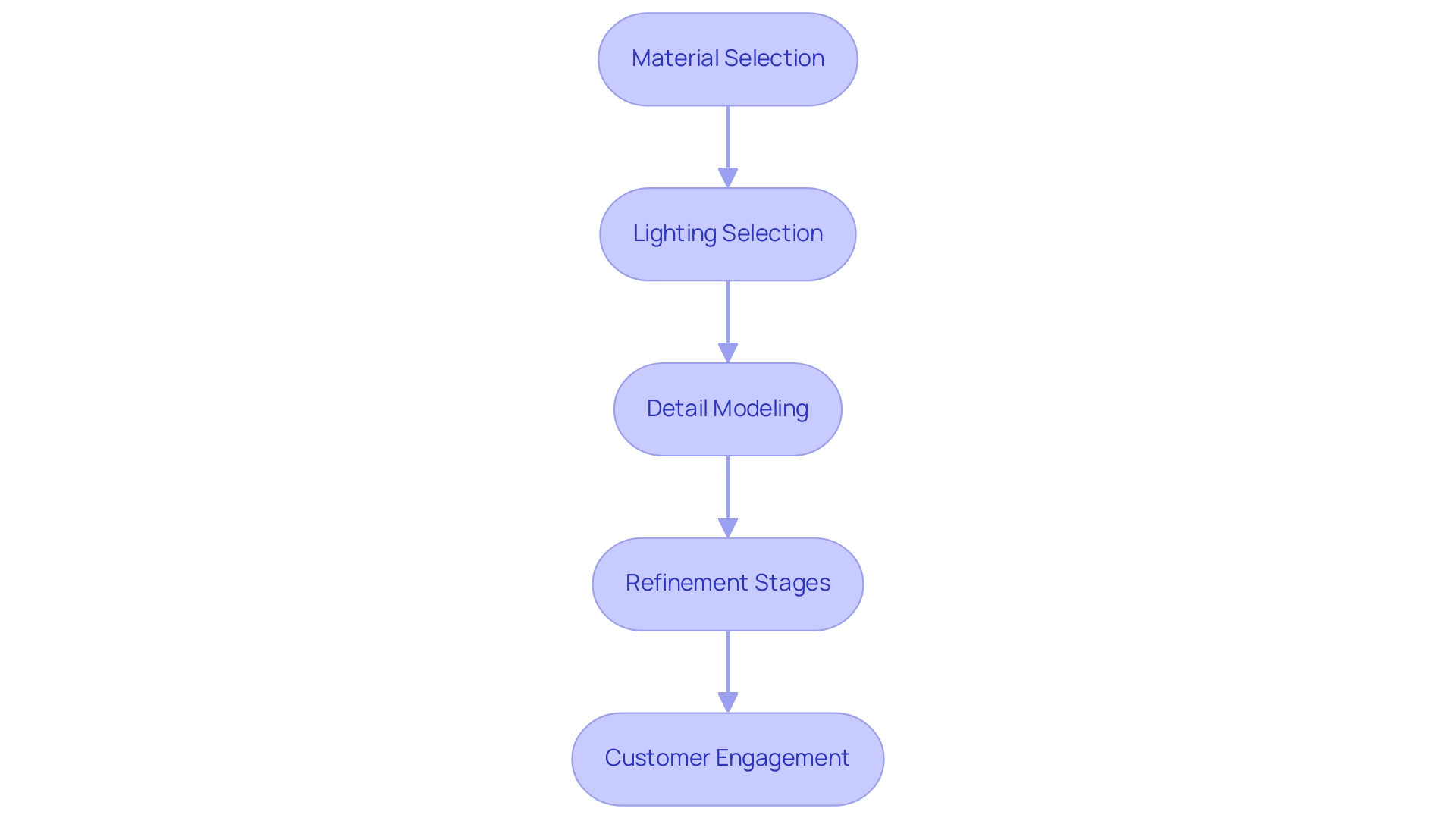
0 Comments